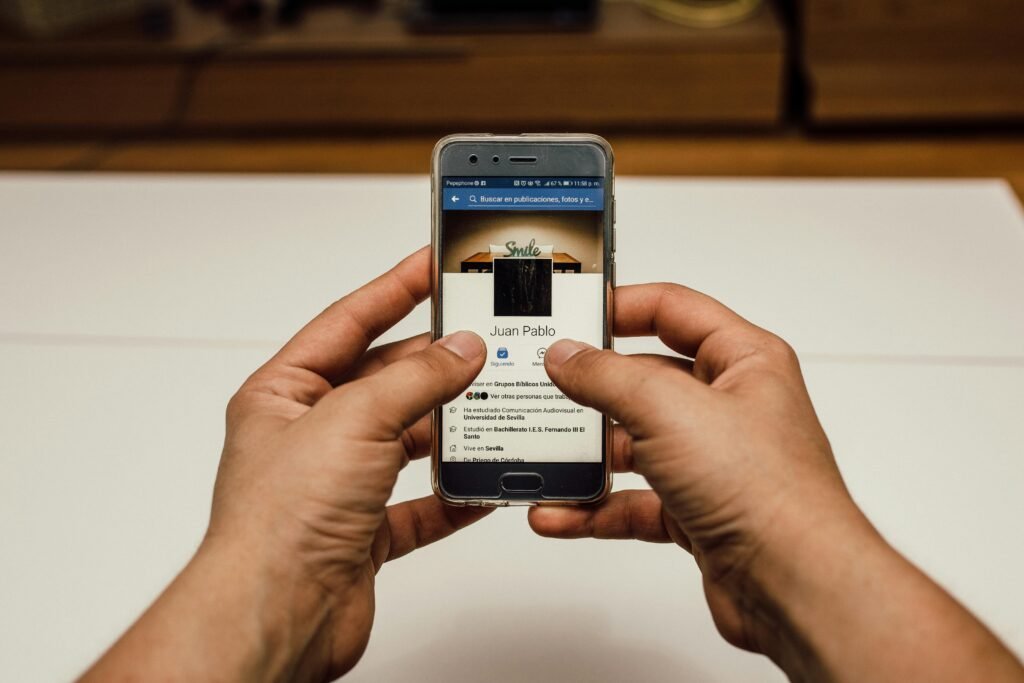Facebook A/B testing turns guesswork into a precise science, giving marketers clear answers instead of assumptions. Every update in the technology space presents an opportunity for marketers to make decisions on maximizing their investment.
One of the best ways marketers target the fine-tuning of their campaigns is through A/B testing, especially on platforms like Facebook Ads. This test essentially means putting one ad versus another in competition to see which one fares better.
This isn’t just another marketing trick. It’s like a simple science experiment. By testing things like ad copy, images, or audiences, businesses can learn what really works and make smarter choices.
Basics of Facebook A/B Testing
A/B testing means comparing two versions of something in this case Facebook ads to find out which one works better. Imagine it as a friendly competition between two ads: Version A and Version B.
You change just one thing, like the headline, image, or button, then show both ads to similar audiences. Afterward, you see which ad gets more clicks, conversions, or engagement.
It’s a simple and powerful way to make smarter marketing choices using real data instead of guesswork.
Let’s Break Down Some Key Terms
- Control vs. Variable: Test a new version (variable) of your ad against the original (control) to see which performs better. This helps you learn what actually works.
- Independent vs. Dependent Variables: Change only one thing (independent variable) like a headline and measure its impact on results (dependent variable) like click-through rate or conversions.
- Statistical Significance: Don’t trust random wins. Make sure your results are backed by data so you can confidently scale what works.
Why Does It Matter?
AB testing isn’t just something nice to have. It’s essential for anyone who wants to get better results from their Facebook A/B testing. It shows you what works and what doesn’t, helping you stop spending money on ads that don’t perform well.
Setting Clear Assumptions
Before starting an A/B test, having a clear hypothesis is essential. It’s like an educated guess that you can test to see if your changes improve your ad’s performance. Without it, your test can get confusing and the results won’t be useful.
A good hypothesis is simple and specific, usually following this pattern: “If I change [this one thing], then [this result] will improve.” This approach helps you clearly understand what you’re testing and what success looks like.
It’s important to avoid vague ideas like, “I think this ad will do better.” Instead, use clear and focused statements such as, “If I use a video instead of an image, the click-through rate will increase.” This way, you know exactly what to change and what to measure.
Your hypothesis should match your business goals:
- Want more website traffic? Focus on improving click-through rate (CTR).
- Want to lower your cost per click? Track cost per click (CPC).
- Want to boost revenue? Measure return on ad spend (ROAS) or conversions.
Aligning your hypothesis with your goals makes your test results meaningful and helps you make smarter marketing decisions.
Choosing the Right Variables to Test
Not all changes in your Facebook ads will have the same impact. Some tweaks can lead to big improvements, while others might barely move the needle. Knowing what to test can help you focus your efforts where they count most.
Here are some tips:
- Start by testing creative elements. For example, compare a product demo video with a still image to see which grabs more attention.
- Headlines are important too. Try testing a benefit-focused headline against a question-based one to find what connects best with your audience.
- Small details matter. Test different call-to-action buttons like “Shop Now” versus “Learn More” to see which drives more clicks.
- Target your audience carefully. Test different segments like young adults versus working professionals to find who responds best.
Remember, the key is to test one variable at a time. This way, your results are clear and meaningful, helping you make smart decisions for your next campaign.
Designing the Test Like a Pro
To get reliable and actionable insights from your AB test, it’s essential to approach it like a data scientist. This means designing your experiment thoughtfully to avoid bias and ensure the data you collect truly reflects the impact of your changes. Here are the key principles to follow:
- Randomize your audience so each person sees only one version of the ad. This prevents outside factors from affecting your results and makes the comparison fair.
- Change only one thing at a time, like the headline or image, while keeping everything else the same. This helps you know exactly what caused any change in performance.
- Use a large enough audience so your results are trustworthy. Small tests with few views might not give clear answers.
- Run your test for at least 5 to 7 days to catch different behaviors during weekdays and weekends. This ensures your data is steady and reliable.
Analyzing Facebook A/B Testing
Once your A/B test ends, it’s time to analyze the data and make informed decisions. This step transforms raw numbers into valuable insights that guide your next actions.
Key Metrics to Track:
- CTR (Click-Through Rate): Measures how many people clicked your ad—showing its appeal.
- CPC (Cost Per Click): Shows how much you’re paying for each click—important for budget efficiency.
- CPM (Cost Per 1000 Impressions): Indicates how cost-effective your reach is.
- Conversion Rate: Tracks whether users take the desired action after clicking.
- ROAS (Return on Ad Spend): Calculates if your ad is generating more revenue than it costs.
Insights and Taking Action
Once your AB test is done and you’ve looked at the data, the next step is to use what you learned to improve your ads. First, find out which version did better based on your main goal, like more clicks or more sales.
The winning ad shows what your audience likes best. Then, use the winning ideas in your future ads. For example, if a shorter headline got more clicks, try using short headlines more often.
However, be mindful of some common pitfalls:
- Don’t rush to conclusions before the test has run its full duration.
- Avoid testing ads on overlapping audiences, as this can distort your results and make it harder to know what truly worked.
Finally, keep testing to keep improving. One test is usually not enough. Use what you learn to try new tests. For example, after choosing a winning image, test different call-to-action buttons with it. Testing is a cycle: test, learn, improve, and repeat.
Tools and Frameworks
You don’t have to handle A/B tests all alone. There are many powerful tools that help you plan, run, and analyze tests more easily and efficiently.
Facebook Experiments is Facebook’s built-in tool that lets you run controlled A/B tests right on the platform. It splits your audience reliably, so you get a fair comparison between ad versions.
Third-party tools like Optimizely, VWO, and AdEspresso offer extra features, deeper insights, and automation to take your testing further than Facebook A/B testing.
Data visualization tools such as Looker Studio, Tableau, and Power BI turn your raw data into clear and easy-to-understand graphs and dashboards. This makes analyzing and sharing your results much simpler.
Using the right tools helps you scale your A/B testing, save time, and make smarter, faster marketing decisions.
- Visualize Results Clearly
Tools like Microsoft Power BI, Tableau, and Looker Studio convert raw A/B test data into easy-to-understand charts and dashboards. - Improve Communication and Decision-Making
These visualizations help teams share insights with stakeholders and make faster, more informed marketing decisions. - Build a Data-Driven System
Using visualization tools fosters continuous improvement by replacing guesswork with clear, performance-based insights.
Having the appropriate tools enables you to expand your efforts, save time, and ultimately make more intelligent marketing decisions, whether you’re testing new target segments, improving your headline, or changing your images.
Conclusion
A/B testing is more than just comparing two ads. It is a smart scientific way to make better marketing decisions. By creating clear hypotheses, testing one change at a time, and looking closely at your data, you can keep improving your Facebook A/B testing.
The secret is consistency. Always test with a clear goal, run your tests long enough to get reliable results, and don’t guess. Let the data lead the way. Use the right tools, keep your audience groups organized, and remember that even small tweaks can make a big difference.
Most importantly, stay curious. The digital world changes fast, so your strategies should too. Keep testing, keep learning, and let each campaign teach you something new. That is how good marketers become great.
FAQS:
1. What is AB testing in Facebook ads?
AB testing means comparing two versions of an ad (like different images or headlines) to see which one works better. It helps you make decisions based on real data instead of guessing.
2. Why should I run AB tests for my Facebook ads?
AB testing shows you what parts of your ads your audience likes most. This helps you spend your money wisely by focusing on ads that get better results like more clicks or sales.
3. How do I design a good AB test?
Test only one change at a time, like a new headline or image. Show the two versions to similar groups of people randomly, and run the test for at least 5 to 7 days to get reliable results.
4. What should I measure to know which ad wins?
Look at key numbers like click-through rate (CTR), cost per click (CPC), conversion rate, or return on ad spend (ROAS) to see which ad performs best for your goal.
5. Are there tools to help me run AB tests?
Yes! Facebook Experiments lets you run tests right on Facebook. You can also use tools like Optimizely or AdEspresso for advanced features, and data tools like Tableau to visualize your results easily.




